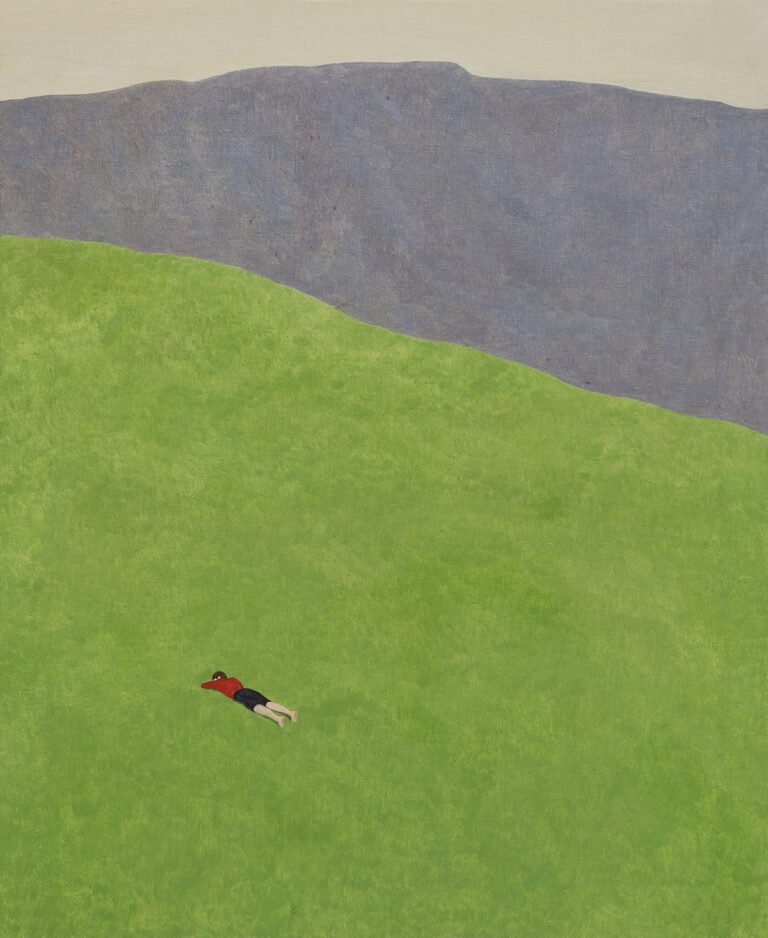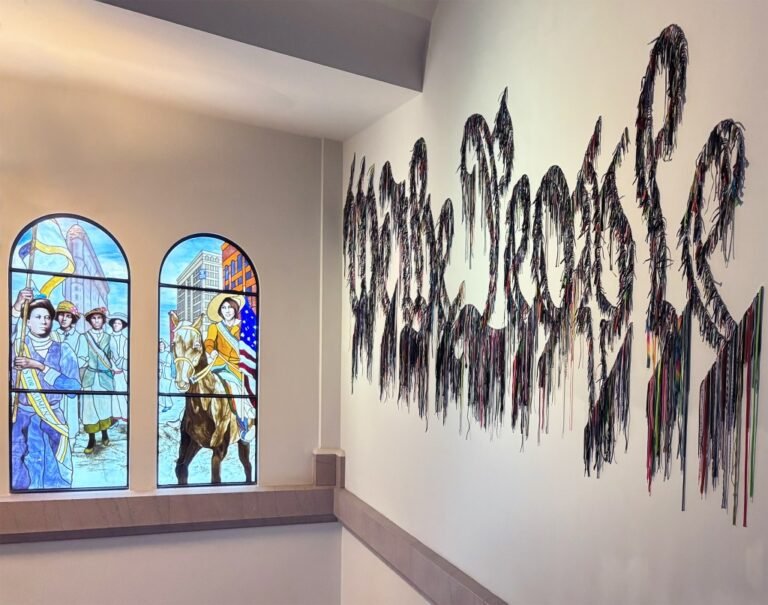

‣ More museums are being forced to address the human remains in their collections, often the result of racial or colonial violence. Rachel Moore tells the story of one such institution in the New Yorker, a medical history museum that is grappling with its own ethics:
Quinn also spearheaded something called the Postmortem project, an example of the kind of institutional self-critique that has become popular in the museum world in the past few years. At the Mütter, this has meant providing visitors with visual annotations to the existing collection in the form of green signs. Near the entrance, for example, a sepia-tinged photograph shows the back of a woman’s head. A matted lock of hair trails down her back in calligraphic spirals, an example of plica, a rare disorder. Like many objects in the Mütter’s collection, it is unsettlingly compelling, the distance of time imbuing the pathology with a kind of poetry. “This photo comes from a book of hair samples doctors took from patients with different ethnic backgrounds,” the Postmortem sign affixed to the display reads. “Is this just a picture of hair when you know that it was used to perpetuate racism?” One of the museum’s temporary galleries is devoted to the Postmortem project, and its atmosphere—white painted walls; bright, clean light; exhibits with clear, legible signage—feels like a portal into an entirely different institution. Next to a display about power and consent, visitors are invited to contribute their responses on butcher paper: “SCARY PEOPLE,” “acknowledge the ugly past,” “Wokeness destroys truth.”
‣ Writer Emmy Potter offers a fascinating perspective on Substack about what sweat in film, and a lack thereof, tells us about our relationship to our own bodies:
Our culture is more aware of our bodies than ever and yet we are more disconnected from them. We only acknowledge them as a collection of stats from our Fitbits or Apple Watches that need to be optimized within an inch of our lives. I constantly get ads now for whole-body deodorants, something I do not remember existing when I was a kid going through puberty totally embarrassed by the growing circles of armpit sweat on my Y2k fitted tees. And I’m constantly being told by these ads that my sweaty armpits, or worse yet, my sweaty nether regions shouldn’t be seen or smelled, but also I shouldn’t be embarrassed if that happens (even though you’re still shaming me for having sweat in the first place and thus embarrassing me) and if I buy this product, I’ll look and smell perfect even on a day when the heat index is 110 degrees. The prevailing message is that sweat is something we must accept happens but also it should be eliminated as soon as possible and invisible at all times so everyone thinks you’re completely superhuman like Wonder Woman or Gwyneth Paltrow.
‣ Glasses with built-in subtitles are in the works, and they’ll reportedly be able to translate social cues. As with much of AI-powered technology, the benefits might not outweigh the costs. Boone Ashworth reports for Wired:
Lavakare wants to let users have the option of translating a spoken language into something more like the syntax used in a visual language such as American Sign Language, which tends to have a different order of nouns, verbs, and tense than spoken English. Trusting that translation to AI, when most Deaf people can and do already read in English just fine, could cause some inaccuracies or misinterpretations. Lavakare acknowledges that potential for error, noting that he has talked with Deaf educators at the American School for the Deaf to try to get it right.
“Sign language grammar is actually very different than English grammar,” Lavakare says. “That’s why this is still experimental.”
He’s also testing an even more dubious capability—recognizing the emotion of a speaker based on tone of voice alone. Emotion tracking is a fraught topic in the AI space, albeit one people just can’t seem to help putting into smart glasses. While TranscribeGlass hasn’t released the ability to catalog emotions during a conversation, the team is testing it with the goal of releasing soon. It makes sense for helping with conversational comprehension, given that detecting how a person says something is often as important as knowing what they say.
‣ Chuck Schumer wrote a book about antisemitism that nobody asked for — but historian Dan Berger has the review we need. For the Spectre, he pans:
Two of the founding pillars of Trumpism—conspiracism and Christian nationalism—are antisemitic. This is indeed the most openly antisemitic administration in living memory. (Nixon, famously antisemitic in private, was more openly preoccupied with crushing Black revolt and the white counterculture to openly peddle the kind of conspiracism that animates Trumpism.) And Schumer has either ignored or looked away from these deadly forms of antisemitism because he agrees with them. So long as the bombs flow to Israel and police target immigrants and radicals at home, Schumer can scarcely be bothered.
Not surprisingly, Palestine solidarity protestors are not afforded the same grace he extends to the most powerful antisemites. The chapter on “Antisemitism on the Left” is the longest one in the book on its own, and the left is the main target of the chapter on “Antisemitism and Israel.” Schumer diagnoses what he calls “Israel-related antisemitism.” It is there where his morbid allegiances meet his warped sense of history in a vainglorious attempt to erase Palestinian personhood.
‣ In some good news, the people of the Chagos Islands are one step closer to regaining the right to return to their homelands after a May agreement with the UK. Scholar David Vine breaks down the role of an American military base on the islands and the ongoing Chagossian movement for the Nation:
“I’ve been betrayed by the British government,” Bernadette Dugasse, one of two Chagossians who brought the suit, said of the treaty. “I will have to keep on fighting the British government till they accept for me to settle” on Diego Garcia (where she was born).
Dugasse’s suit and plans for additional legal action are being funded by a shadowy “Great British PAC” that won’t disclose its donors. The group is led by right-wing political figures still trying, in their words, to “Save Chagos.” However, “saving Chagos” doesn’t mean saving Chagos for the Chagossians, but “saving” it from the end of British colonial control. In other words, right-wing figures are cynically using Chagossians to try to uphold the colonial status quo. (Even Dugasse fears she’s being used.)
On the other hand, the Chagos Refugees Group and many other Chagossians are celebrating, at least partially. For the first time in more than half a century of struggle they can go home to most of their islands, even if they, too, criticize the ban on returning to Diego Garcia and the shamefully small amount of compensation being offered: just £40 million earmarked for a Chagossian “trust fund” operated by the Mauritian government (with British consultation). Divided among the entire population, this could be as little as £5,000 per person for the theft of their homeland and more than half a century in exile. (People in car accidents get far more.)
‣ A group of women in South Korea known as the Haenyeo can hold their breath underwater for minutes at a time (my inner wannabe-mermaid is jealous). That ability might be the result of a genetic adaptation, Gayoung Lee explains for Scientific American:
But Ilardo notes that some physiological differences, such as heartbeat changes, were unique to the Haenyeo. During the face-dunking experiment, Haenyeo participants’ heart rates slowed by 50 percent more, on average, compared with nondiver Jeju residents. This helps their bodies manage oxygen circulation through their bodies during a long dive, letting them “spend that resource as frugally as possible,” Ilardo says. She adds that this acquired trait could also develop in nondiver individuals who are not from Jeju Island. While the study did not test participants’ cold tolerance, that is something the Superhuman Lab is planning to investigate in future work with the Haenyeo.
Researchers can learn vital lessons about human evolution from such unique adaptations, says Ben Trumble, an Arizona State University biologist who specializes in human biology and was not involved in the new study. Cataloging the lifestyle and genes of special populations such as the Haenyeo could inform research into areas such as precision medicine, which requires a specialized understanding of how certain genetic variations translate into physiological traits, Trumble explains.
‣ Financial literacy specialist Katie Gatti Tassin breaks down the lazy “gotcha” behind critiques of Zohran Mamdani and his socialist beliefs:
‣ I will never not be a Tom Otterness hater:
‣ Why are anthropologists incapable of giving a thick baddie her flowers?
‣ This video of a baby yak named Burrito makes me feel like all is right in the world:
Required Reading is published every Thursday afternoon, and it is comprised of a short list of art-related links to long-form articles, videos, blog posts, or photo essays worth a second look.






